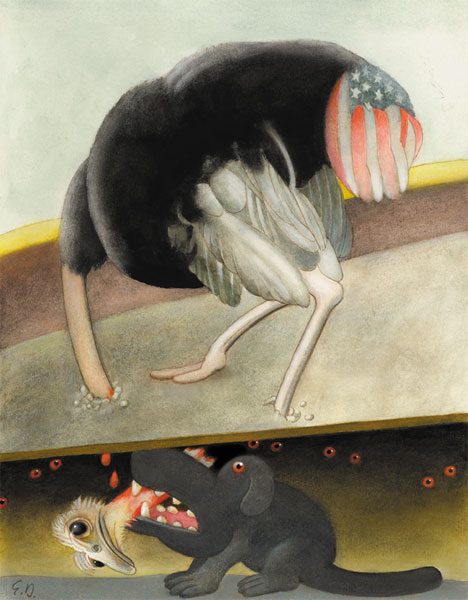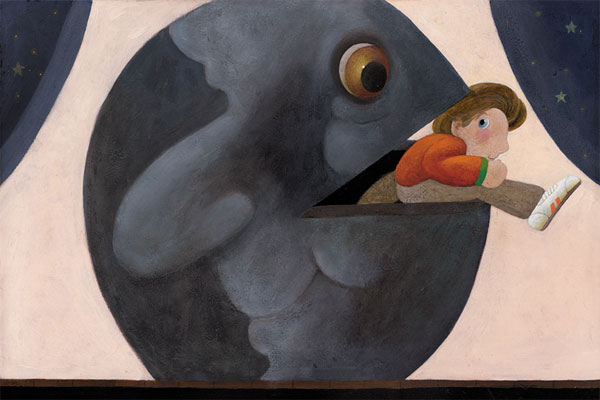I remember the moment I met the illustrator Etienne Delessert and designer Rita Marshall. The duo had just created a series of beautifully illustrated books of vintage children’s stories using many artists not known for working in the genre.
Both were champions of lesser-known artists, and I was preparing to do a story on them for Graphis. I was excited to learn that they had recently moved to Lakeville, CT, near my own country home. That was 40 years ago. During those years they worked together producing beautifully designed and illustrated books for Creative Editions. Rita had a distinct classic-contemporary style that harmonized with Etienne’s uniquely fanciful artwork (as well as others she hired for the publisher). They were a fixture in the industry—Rita for her splendid art direction, and Etienne for his iconic conceptual illustration.
He was well-known and highly influential in the United States but was a high magnitude star in Europe, especially his native Switzerland, where exhibitions of his work were frequent and his books were constantly in print. All told, he illustrated more than 80 titles.
Etienne passed away on April 22at 83. He had been difficultly recovering at his home in Lakeville from a stroke two years earlier that had left him partially paralyzed. His death triggered a memory of a major moment in my own professional life.
Etienne produced the first printed color artwork to appear in The New York Times when I was working for the paper. The only direction I gave him was the title “The Sins of Summer” for our annual seasonal reading issue. I felt that running his image (seen below) was a personal triumph, since there was an unwritten rule that snakes were prohibited in the daily Times (a decree that annoyed me). This being the Sunday Book Review, it luckily passed under the radar. The publisher and editors were, in fact, more concerned with how our first attempt at a live color section (after months of faulty practice runs) would look and be received. Etienne successfully created the perfect image, using colors (the publisher had certain preferences) that passed muster. He also did a black-and-white version at the eleventh hour, just in case something went terribly wrong. Anticipation ran high. Yet nothing went awry. The color wall was breached. Most naysayers said yay. And over the ensuing years Etienne created around half a dozen more covers.

During the following decades he continued to illustrate and author books and exhibitions. He proudly mounted Les Maîtres de l’Imaginaire in Lausanne, Switzerland, to honor and archive Rita’s incomparable book and typographic design. (Which, he told me, being modest, she was reluctant to have done. He insisted.)
After learning of his death, I poured through the “Delessert” file I had been updating over the years. More than transcribing a list of his achievements, of which there are many, these funny, poignant, satiric, acerbic images speak volumes about his sense and nonsense—and do more justice to his legacy than I can do in words.









